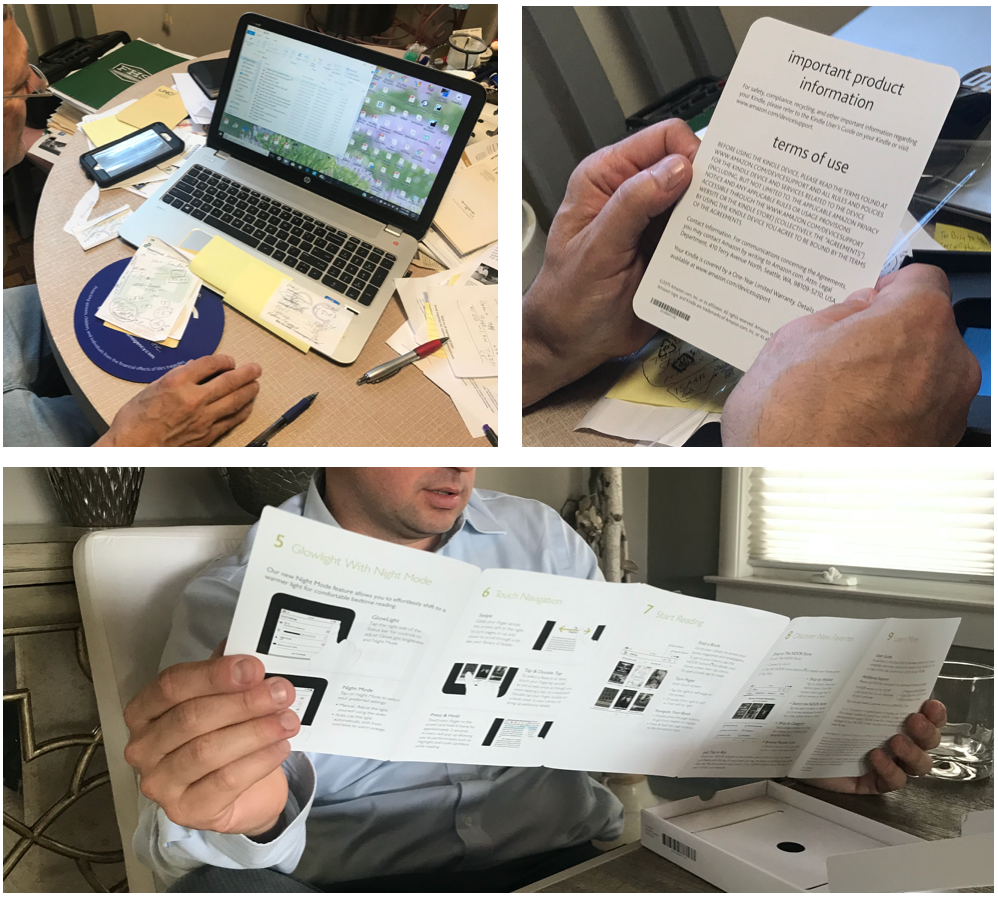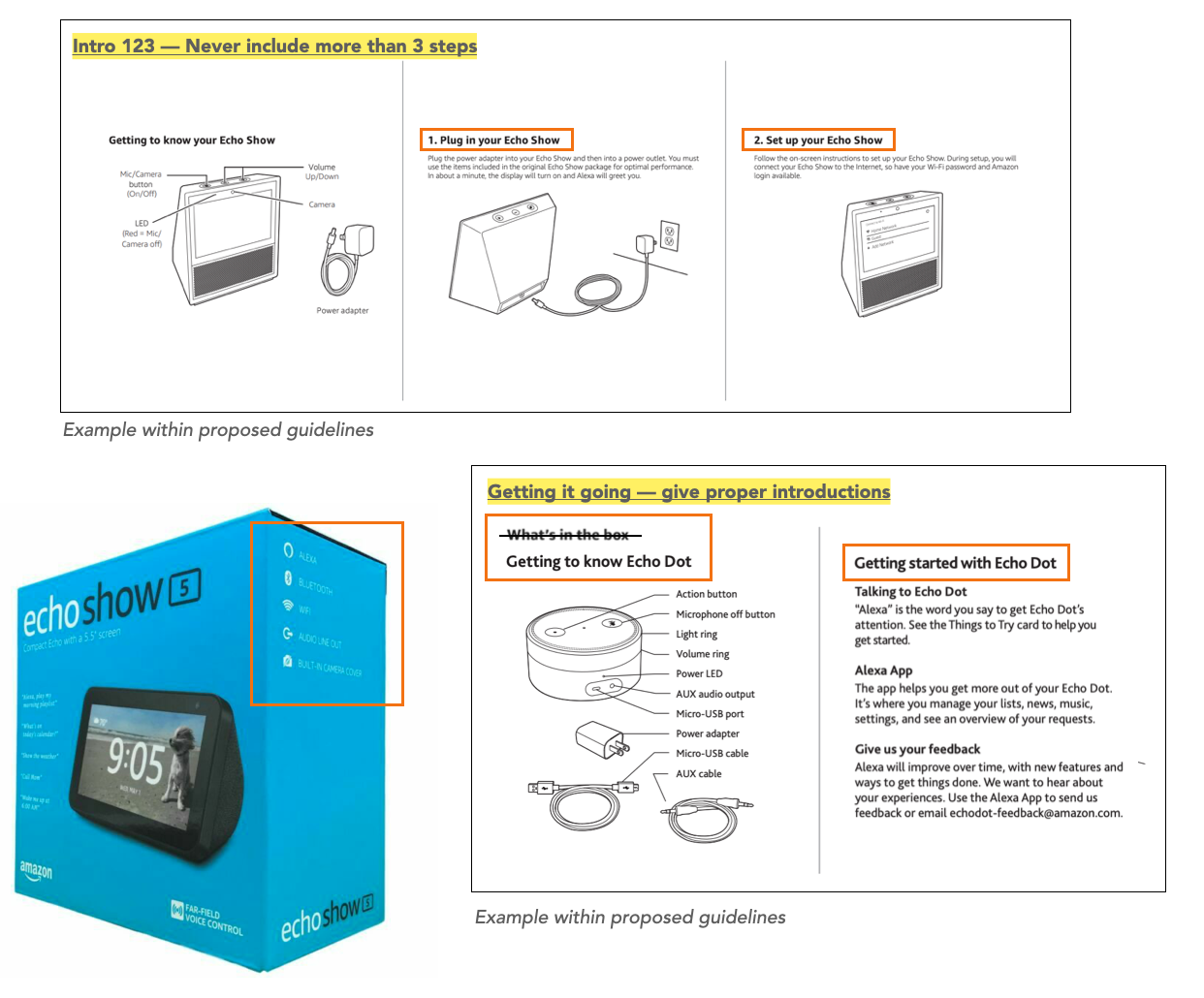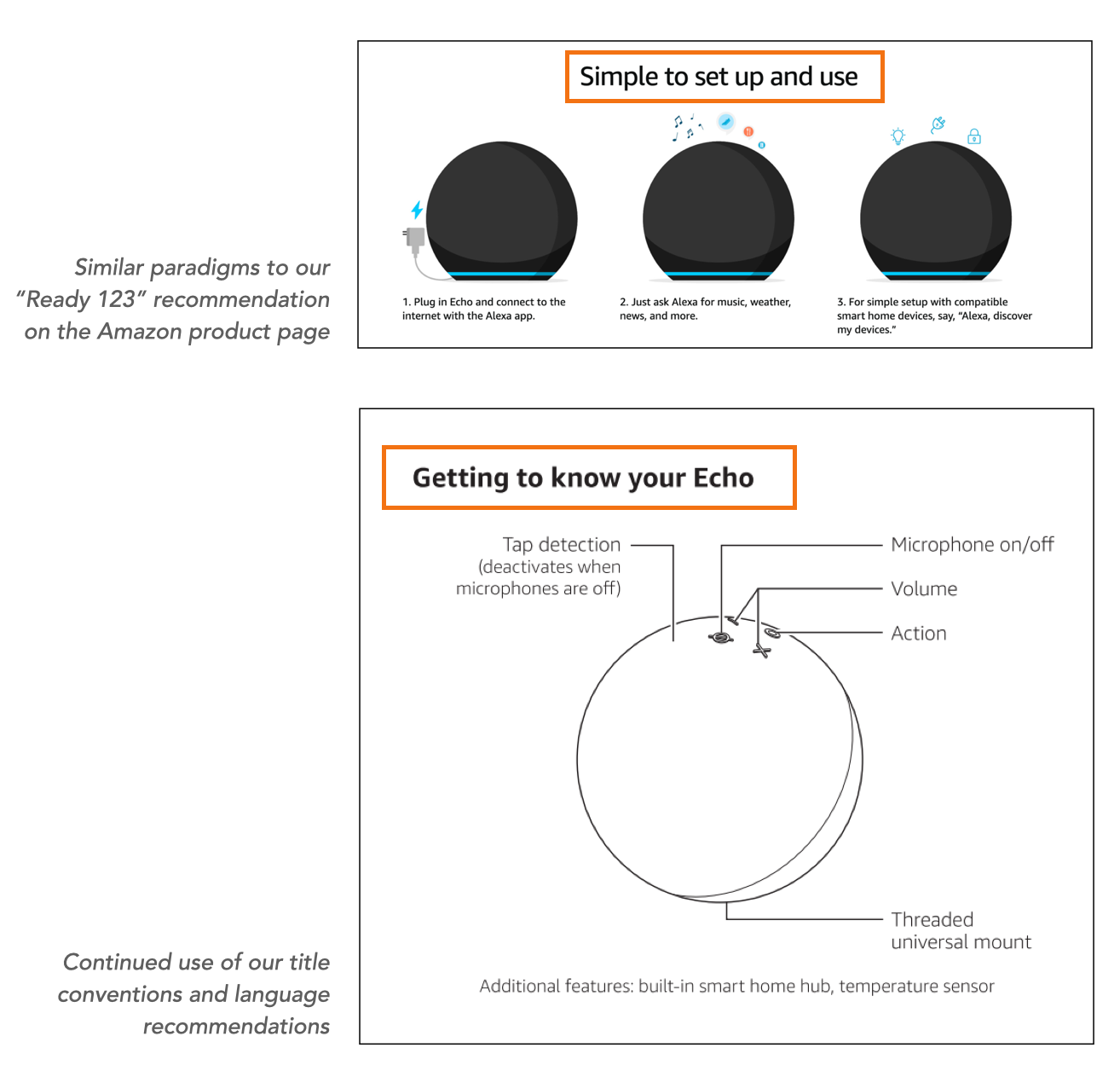
Thinking inside the box.
Creating a unified approach to quick start guide material across Amazon devices.
Lab126, the internal R&D team that designs and engineers smart devices for Amazon, asked for our help prioritizing and testing the language and copy in their setup experience to reduce text (and minimize printing cost).
Our research helped the team better understand how new users used supporting material to set up their products for the first time and led to a new style guide for all of their quick start guide material for physical documents and digital onboarding flows alike.
Team
The team at Sutherland Labs comprises social scientists, designers, and strategists that help Sutherland Global’s clients, like Amazon, understand customer and employee behavior–what they say, think, and do.
Key problem to solve
Existing quick start guide material had been designed with one user group in mind––early adopters. We needed to start testing material to meet the bare minimum before we made it anything close to “delightful.”
Recruiting
The project's focus was on new-to-category users, as individuals who relied on the documentation the most, to ensure the team could prioritize necessary content and cut out the fluff. So, we recruited participants specifically to meet Amazon’s internal market segments of “Tech Cautious Connectors” or “Tech Minimalists.” This required that users were:
Reliant on others (or extra help) for tech setup
Participants cited their spouse and/or kids as the “tech-savvy one” who would help set up new technology or point them to the right Youtube video.New to product category
All participants were new to at least one of the four respective categories that we tested.Diverse age range, expected to skew majority >35yo
Of the 45 participants (some sessions individual, others couples), the study had a majority over 35.
Research
On a team of two, I set out with my partner to moderate sessions with users in stores, homes, and lab settings in the Bay Area, Philadelphia, and St.Louis (respectively).
Shadowing participants shopping in real-world retail environments allowed us to assess the new user's preliminary understanding, focusing on external packing. In-homes helped us observe the setup experience for our product list unfold in "their natural environment." Eventually, we moved to a lab to garner added insight from users that were guaranteed to have everything they needed directly in front of them.
We observed customers as they opened Amazon products against their direct competitor products to get varying perspectives on the unboxing experience across categories and identify ways to improve the experience for new users, including the internal packaging, documentation, and on-screen guidance.
Deliverables
Our final hand-off included the final insights report as well as recommendations to adjust their existing "quick start" style guide and external packaging.
These included renaming the product specs page to "Getting to know your [device]" and adding the "Getting started with [device]" page to the end of the quick start instead of inserting it as a separate pamphlet users often didn’t even see during setup.
Workshopping it out
At the end of our research, we presented our findings to keep moving forward. We hosted a co-creation workshop with the designers at Lab 126 to map the unboxing journey and highlight opportunities for improvement. Together, our time resulted in a series of prioritized pain points within the quick start guide and setup experience and key recommendations to ease the pain.
Results
By exposing how new-to-category users unbox and initially set up Amazon products, we prioritized opportunities to reduce copy, make the technical language more approachable, and incorporate added visual aids to make sense of the device (and the most of it).
New designs rolled out in November 2019 and resulted in increased product adoption (streaming time, screen time, and app usage related to devices). Our work allowed Amazon stakeholders to understand the new-to-category customer experience better and make a case for creating a more unified unboxing experience that meets the needs of “tech minimalists" and “early adopters” alike.
Takeaway
Projects that start visually or abstractly tend to rely on language—telling the story is part of designing any experience.







